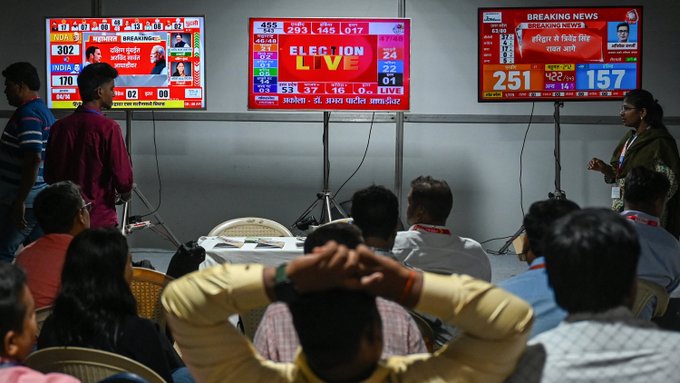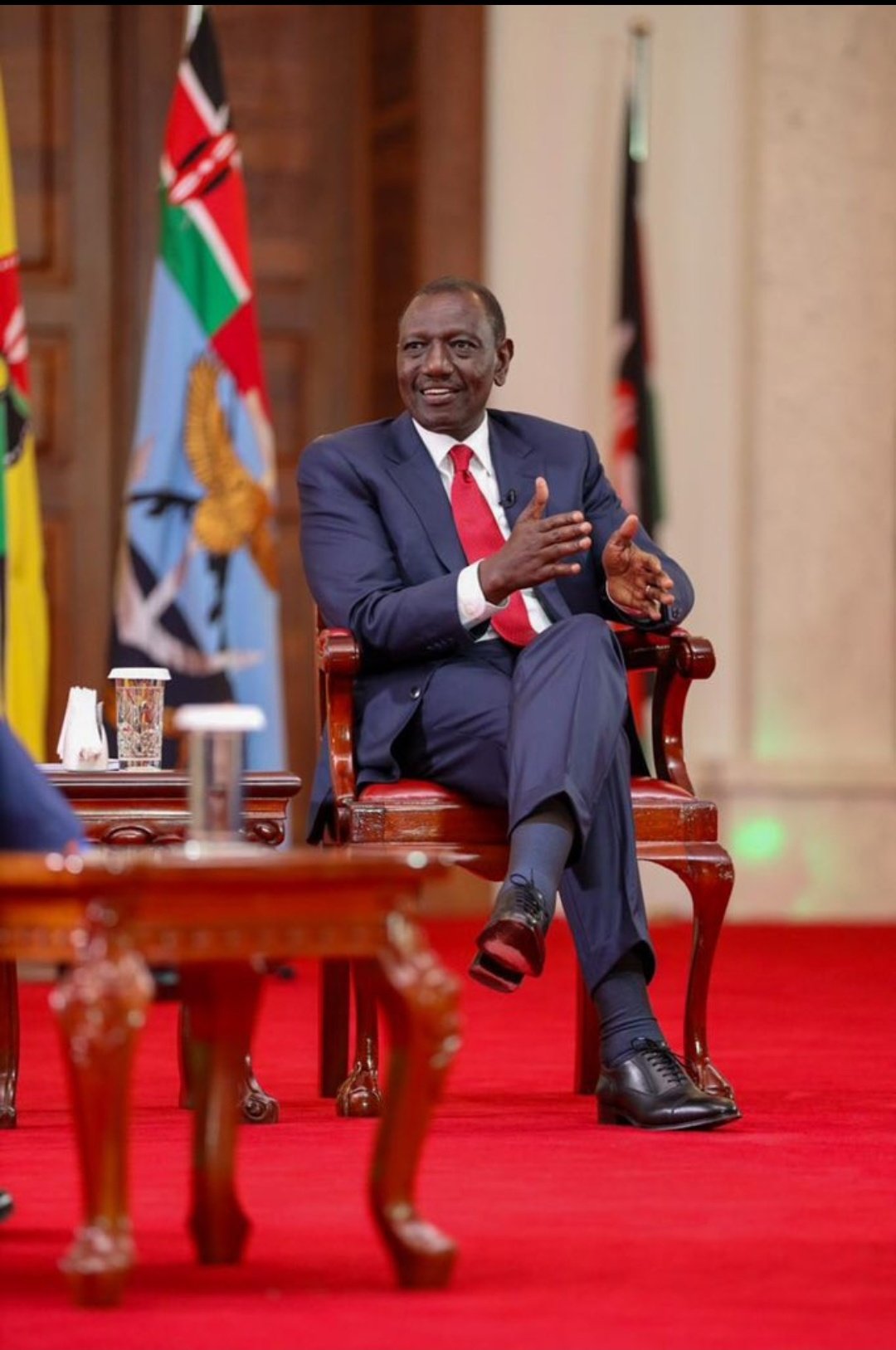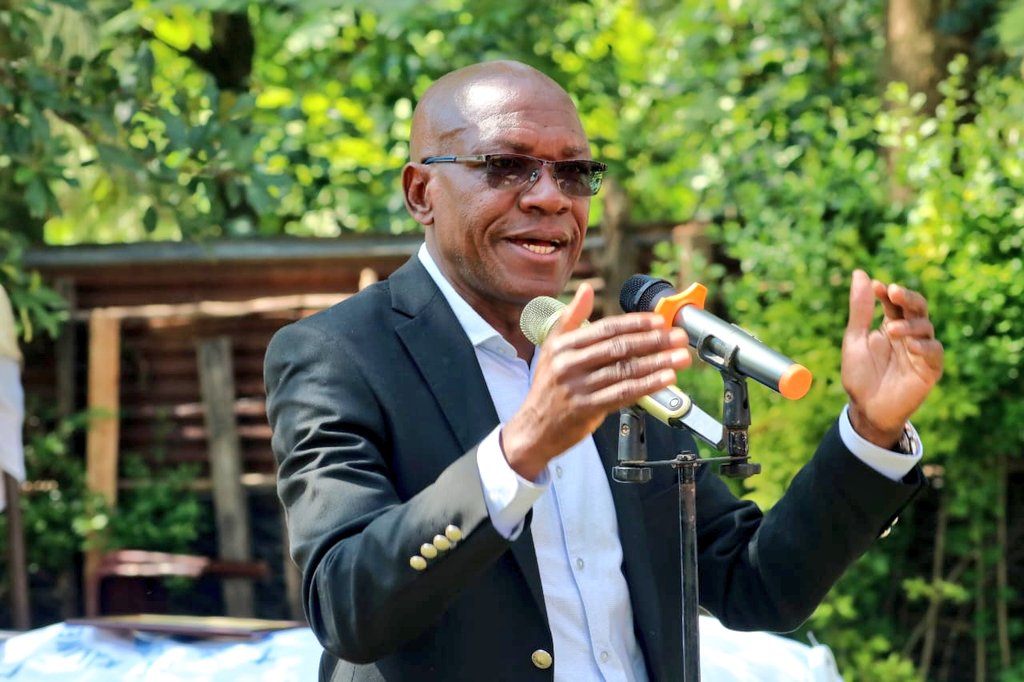
In the wake of Prime Minister Narendra Modi’s unexpectedly slim victory in India’s recent election, a wave of introspection has swept across the nation’s media landscape. The discrepancy between the landslide win predicted by many cable news channels and the actual results has forced India to confront a uncomfortable truth: the country’s media ecosystem may have become so entangled with political interests that it failed to accurately gauge the pulse of the electorate. This blog post delves into the factors that led to this miscalculation, its implications for Indian democracy, and the lessons that can be drawn from this experience.




Table of Contents
- The Prediction vs. Reality: Understanding the Gap
- The Echo Chamber Effect: How Cable News Shaped Perceptions
- The Business of News: Rating Wars and Political Patronage
- Social Media’s Role: Amplifying Bias and Misinformation
- The Silent Majority: Voices Unheard in Mainstream Media
- Opposition Strategies: Navigating a Hostile Media Environment
- International Perspectives: How Foreign Media Viewed the Election
- The Polling Conundrum: Methodological Flaws and Challenges
- Regulatory Framework: The Need for Media Reforms
- Looking Ahead: Restoring Trust in Indian Media
The Prediction vs. Reality: Understanding the Gap
The 2024 Indian general election was touted by many as a foregone conclusion. Cable news channels, particularly those perceived to be pro-government, painted a picture of an unstoppable Modi wave that would sweep the nation. Headlines screamed of a potential 400+ seat victory for the Bharatiya Janata Party (BJP)-led National Democratic Alliance (NDA). Political pundits on prime-time shows confidently predicted a decimation of the opposition.
However, when the results were announced, the reality was starkly different. While the BJP-led coalition did secure a majority, it was by a much slimmer margin than anticipated. The opposition, far from being obliterated, had made significant inroads in several states. This discrepancy between prediction and outcome has raised serious questions about the role of media in shaping public perception and the potential consequences of such misrepresentation.
To understand this gap, we need to examine several factors:
- Overreliance on echo chambers: Many news channels seemed to be operating within closed information ecosystems, reinforcing existing beliefs rather than challenging them.
- Flawed polling methodologies: The polls that formed the basis of these predictions may have suffered from sampling biases or inadequate representation of diverse voter groups.
- Political pressure: There were allegations of news channels facing pressure to present a narrative favorable to the ruling party.
- Underestimation of local issues: While national narratives dominated cable news, local issues that swayed voters in many constituencies were often overlooked.
- Failure to capture silent dissent: The voices of those dissatisfied with the government but hesitant to speak openly were largely missing from mainstream discourse.
The ramifications of this misreading extend beyond mere embarrassment for the media outlets involved. It raises fundamental questions about the health of India’s democracy and the ability of its fourth estate to fulfill its role as a watchdog and informer of the public.
The Echo Chamber Effect: How Cable News Shaped Perceptions
The echo chamber effect in Indian cable news played a significant role in shaping perceptions about the election outcome. This phenomenon occurs when information, ideas, or beliefs are amplified or reinforced by communication and repetition within a closed system. In the context of Indian media, several factors contributed to this effect:
- Partisan ownership: Many news channels in India are owned by individuals or corporations with clear political leanings. This ownership pattern often influences editorial decisions and the overall narrative presented by these channels.
- Rating-driven content: The fierce competition for viewership often leads channels to sensationalize news and cater to their perceived audience preferences, rather than presenting a balanced view.
- Panel discussions: The selection of panelists on news debates often favored those who aligned with the channel’s narrative, creating an illusion of consensus.
- Selective reporting: News that aligned with the predicted outcome was given prominence, while contradictory information was often downplayed or ignored.
- Social media algorithms: The personalization of social media feeds further reinforced existing beliefs, as users were more likely to see content that aligned with their views.
This echo chamber effect had several consequences:
- Confirmation bias: Viewers who supported the ruling party found their beliefs constantly reinforced, making them less receptive to alternative viewpoints.
- Polarization: The stark divide in narratives between pro-government and opposition-leaning channels further polarized the electorate.
- Misreading ground realities: Journalists and analysts, consumed by the dominant narrative, may have failed to pick up on subtle shifts in public opinion.
- Undermining of democratic discourse: The lack of diverse perspectives hindered meaningful debate on crucial issues facing the nation.
The echo chamber effect in cable news not only misled viewers but also potentially influenced the strategies of political parties. The opposition, often portrayed as weak and divided, may have been underestimated by both the ruling party and the public. Conversely, the ruling party, buoyed by favorable coverage, might have overlooked growing discontent in certain sections of society.
Breaking out of these echo chambers is crucial for the health of Indian democracy. It requires a concerted effort from media organizations, regulators, and consumers of news to promote diversity of thought and critical analysis of information.
The Business of News: Rating Wars and Political Patronage
The miscalculation of election results by Indian cable news channels cannot be fully understood without examining the business model of news in India and the complex relationship between media, politics, and corporate interests.
Rating Wars
The Indian television news landscape is incredibly competitive, with dozens of 24-hour news channels vying for viewership. This competition has led to several problematic trends:
- Sensationalism: To grab eyeballs, many channels resort to sensationalist headlines, dramatic presentations, and hyperbolic language. This often comes at the cost of nuanced reporting.
- Breaking News Syndrome: The pressure to be the first to report often leads to a compromise in fact-checking and verification processes.
- Opinion over News: Prime time slots are increasingly dominated by opinion shows rather than straight news reporting. These shows, often featuring heated debates, prioritize entertainment value over informative content.
- TRP Manipulation: There have been instances of channels being accused of manipulating Television Rating Points (TRPs) to attract advertisers, further skewing the content towards what is perceived as popular rather than what is important.
Political Patronage
The relationship between media houses and political parties in India is often uncomfortably close:
- Ownership Patterns: Many news channels are owned by individuals or corporations with clear political affiliations. This ownership can significantly influence editorial policies.
- Advertisement Revenue: Government advertisements form a substantial part of revenue for many media houses. This financial dependence can lead to self-censorship or favorable coverage of the ruling party.
- Access Journalism: The promise of exclusive interviews or inside scoops can sometimes lead journalists to soften their stance towards politicians.
- Regulatory Leverage: The government’s power over broadcast licenses and other regulations can be used as a tool to influence news coverage.
Corporate Influence
The role of corporate interests in shaping news narratives cannot be overlooked:
- Cross-Media Ownership: Many large corporations own stakes in both media houses and other industries, leading to potential conflicts of interest in reporting.
- Advertising Pressure: Big corporations, often the largest advertisers, can exert pressure on news channels to suppress unfavorable stories.
- Debt and Financials: Some media houses, burdened by debt, become vulnerable to external influences in their editorial decisions.
The confluence of these factors – rating wars, political patronage, and corporate influence – created an environment where accurate, unbiased reporting of the election became secondary to other interests. Channels that predicted a massive victory for the ruling party may have been motivated by a combination of factors:
- Pleasing their perceived pro-government audience base
- Currying favor with the ruling party
- Aligning with the interests of their corporate owners
- Simply following the herd to avoid being left behind in the ratings race
This business model of news has serious implications for democracy:
- Erosion of Trust: As viewers become aware of these biases, trust in media as a whole diminishes.
- Misinformed Electorate: Biased or inaccurate reporting can lead to a misinformed electorate, undermining the very basis of democratic decision-making.
- Weakening of Opposition: Constant negative portrayal of opposition parties can weaken the checks and balances necessary in a healthy democracy.
- Policy Impact: Skewed reporting can influence public opinion on crucial policy matters, potentially leading to suboptimal governance decisions.
Addressing these issues requires a multi-pronged approach:
- Strengthening media ownership regulations to ensure diversity
- Enhancing the powers and independence of broadcasting regulatory bodies
- Encouraging alternative revenue models for news organizations to reduce dependence on government or corporate advertising
- Promoting media literacy among the public to create a more discerning audience
The business of news in India played a significant role in the misreading of the election results. Moving forward, it is crucial to find a balance between the commercial viability of news organizations and their responsibility to provide accurate, unbiased information to the public.
Social Media’s Role: Amplifying Bias and Misinformation
The role of social media in shaping public opinion and amplifying certain narratives during the Indian election cannot be overstated. While social media platforms have democratized information sharing, they have also created an environment ripe for the spread of misinformation and the reinforcement of biases. This section explores how social media contributed to the miscalculation of Modi’s victory margin.
Echo Chambers and Filter Bubbles
Social media algorithms are designed to show users content they are likely to engage with, based on their past behavior and preferences. This creates echo chambers where users are predominantly exposed to information that aligns with their existing beliefs. In the context of the Indian election:
- Confirmation Bias: Users supporting a particular party were more likely to see and share content favorable to that party, reinforcing their belief in its impending victory.
- Limited Exposure to Diverse Views: The algorithmic curation of content made it less likely for users to encounter perspectives that challenged their existing beliefs about the election outcome.
- Illusion of Consensus: Within these echo chambers, the apparent unanimity of opinion could lead users to believe that their views were representative of the broader population.
Virality of Misinformation
The rapid spread of misinformation on social media platforms played a significant role in distorting perceptions about the election:
- Fake News: Fabricated stories, often designed to glorify or vilify certain political figures, spread rapidly across platforms like WhatsApp, Facebook, and Twitter.
- Manipulated Media: Doctored videos and images were used to create false narratives about politicians and parties.
- Coordinated Inauthentic Behavior: There were instances of coordinated campaigns using bot networks and troll farms to amplify certain messages and suppress others.
- Lack of Fact-Checking: The speed at which information spreads on social media often outpaces fact-checking efforts, allowing misinformation to reach wide audiences before it can be debunked.
Influence on Mainstream Media
The relationship between social media and traditional media created a feedback loop that further amplified certain narratives:
- Source of Stories: Journalists often used social media trends and viral content as sources for news stories, sometimes without adequate verification.
- Pressure to Keep Up: The fast-paced nature of social media put pressure on traditional media to report quickly, sometimes at the expense of thorough fact-checking.
- Amplification of Fringe Views: Extreme opinions that gained traction on social media sometimes found their way into mainstream discourse, skewing perceptions of public sentiment.
Political Microtargeting
Political parties and candidates used sophisticated social media strategies to target specific voter demographics:
- Data-Driven Campaigning: Parties used data analytics to tailor messages to specific voter groups, potentially creating a fragmented understanding of the overall political landscape.
- Personalized Political Ads: Micro-targeted political advertisements on platforms like Facebook allowed parties to present different, sometimes contradictory, messages to different voter segments.
- Influencer Campaigns: Political parties enlisted social media influencers to sway public opinion, often blurring the lines between authentic content and political messaging.
Challenges in Regulation
The difficulty in regulating social media content posed significant challenges:
- Platform Policies: The policies of global social media platforms didn’t always align with Indian electoral regulations, creating gaps in enforcement.
- Anonymity: The ability to create anonymous or fake profiles made it difficult to hold individuals accountable for spreading misinformation.
- Cross-Platform Sharing: The ease of sharing content across multiple platforms made it challenging to contain the spread of misleading information.
Impact on Voter Behavior
The social media environment had tangible effects on voter behavior and perceptions:
- Bandwagon Effect: The perception of overwhelming support for a particular party on social media may have influenced undecided voters.
- Voter Apathy: In areas where one party was perceived to be dominant, opposition supporters might have been discouraged from voting.
- Polarization: The often-confrontational nature of political discourse on social media may have deepened political divisions among the electorate.
The Way Forward
Addressing the challenges posed by social media in the electoral context requires a multi-faceted approach:
- Digital Literacy Programs: Educating the public about identifying credible sources and fact-checking information.
- Stronger Collaboration: Enhanced cooperation between social media platforms, fact-checkers, and election authorities.
- Transparent Political Advertising: Implementing stricter rules for political ads on social media, including clear labeling and disclosure of funding sources.
- Algorithmic Accountability: Encouraging social media platforms to be more transparent about how their algorithms curate content, especially during election periods.
- Real-Time Monitoring: Developing better tools and processes for real-time monitoring and countering of misinformation during critical periods.
The role of social media in amplifying biases and misinformation significantly contributed to the miscalculation of Modi’s victory margin. As India moves forward, finding a balance between the benefits of social media as a tool for democratic expression and the need to mitigate its potential for manipulation will be crucial for the health of the country’s democracy.
The Silent Majority: Voices Unheard in Mainstream Media
One of the most significant factors contributing to the miscalculation of Modi’s victory margin was the failure to capture the voices of the “silent majority” – those segments of the population whose opinions were not adequately represented in mainstream media discourse. This section explores the various groups that comprise this silent majority and the reasons their perspectives were overlooked.
Identifying the Silent Majority
The silent majority in the context of the Indian election consisted of several diverse groups:
- Rural Voters: Despite constituting a significant portion of the electorate, rural voices were often underrepresented in national media narratives.
- Economically Disadvantaged: Those at the lower end of the economic spectrum, who may not have access to or engage regularly with mainstream media.
- Minority Communities: Religious and ethnic minorities whose concerns may not have been given adequate attention in pre-election coverage.
- Women: Despite making up roughly half the electorate, women’s perspectives were often sidelined in political discussions.
- First-Time Voters: Young voters, especially in smaller towns and villages, whose political attitudes may have been misunderstood or ignored.
- Disillusioned Party Supporters: Those who traditionally supported the ruling party but had grown dissatisfied, yet were hesitant to voice their concerns openly.
Reasons for Silence
Several factors contributed to the lack of representation of these groups in mainstream discourse:
- Fear of Reprisal: In some cases, individuals may have been hesitant to express views contrary to the perceived








